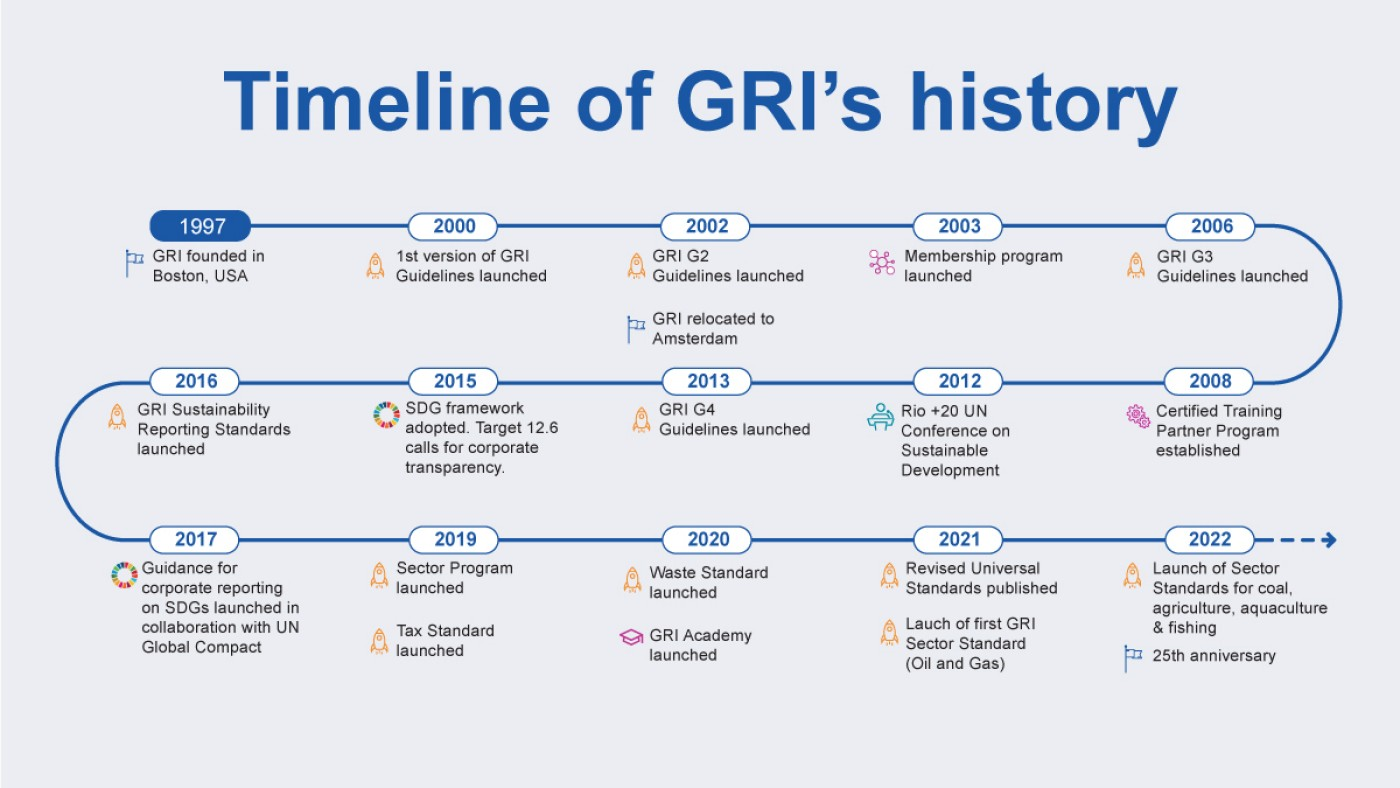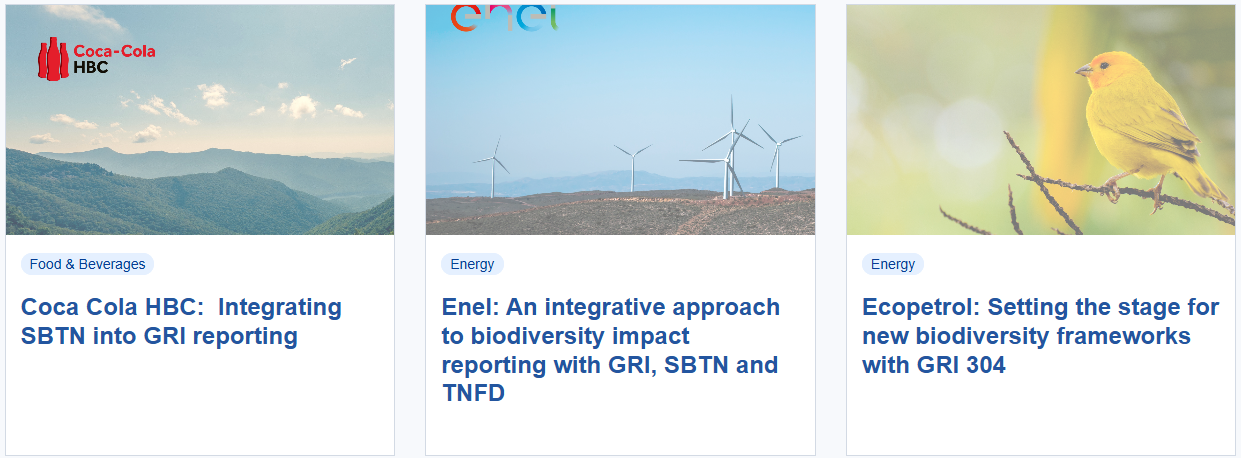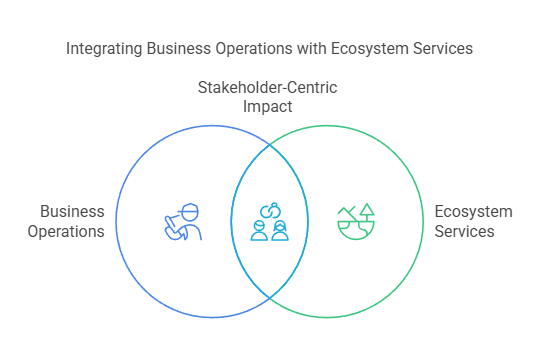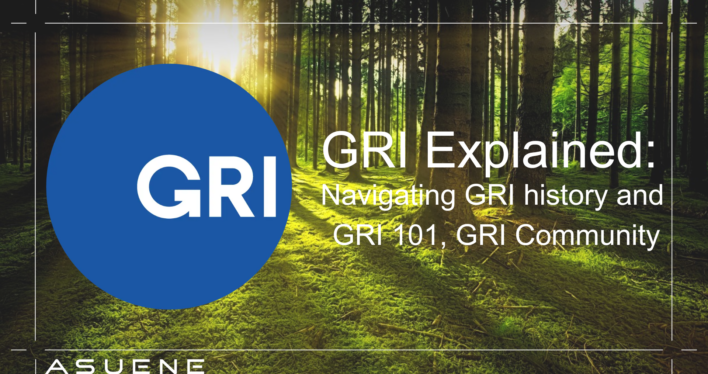- Article Summary
-
Overview
The Global Reporting Initiative (GRI) has established itself as the preeminent framework for sustainability reporting worldwide, helping organizations disclose their environmental, social, and governance impacts with consistency and transparency. This article explores two key components of the GRI ecosystem: the recently introduced GRI 101 Biodiversity standard and the collaborative GRI Community network. Understanding these elements is crucial for organizations seeking to enhance their sustainability reporting practices in an increasingly environmentally conscious business landscape.

The Evolution of GRI Standards
The Global Reporting Initiative was established in 1997 as a non-profit organization recognized by the United Nations Environment Programme. Headquartered in Amsterdam, Netherlands, GRI has been developing international standards for sustainability reporting for over two decades, with its first guidelines published in 2000. Since its inception, GRI has continuously refined its approach to better address emerging sustainability challenges and stakeholder expectations, evolving from general guidelines to more specific, detailed standards that provide clear reporting frameworks.
The development process for GRI Standards involves diverse stakeholders including businesses, consultants, audit firms, labor unions, and academics, ensuring the standards remain relevant and reflective of global best practices. This multi-stakeholder approach has been instrumental in establishing GRI as the most widely adopted sustainability reporting framework globally. The comprehensive nature of GRI Standards has made them indispensable for organizations committed to transparency about their sustainability performance, allowing for greater comparability between organizations regardless of size, sector, or location.
GRI Standards are structured into two main components: common standards and topic-specific standards. The common standards establish the fundamental reporting principles, organizational profile requirements, and other essential elements that apply to all reporters. The topic-specific standards are categorized into economic, environmental, and social dimensions, providing detailed guidance on reporting specific sustainability topics. This structure enables organizations to create comprehensive sustainability reports that address all relevant aspects of their operations.

Understanding GRI 101: Biodiversity 2024
On January 25, 2024, GRI announced a significant update to its biodiversity reporting standard, replacing GRI 304 (Biodiversity 2016) with GRI 101 (Biodiversity 2024). This new standard represents a major advancement in biodiversity reporting, responding to the global biodiversity crisis and aligning with key international frameworks such as the Kunming-Montreal Global Biodiversity Framework, Science-Based Targets Network, and the Taskforce on Nature-related Financial Disclosures (TNFD).
Structure and Key Components
GRI 101 comprises eight disclosure items, divided into three management-related disclosures and five topic-specific disclosures. The management disclosures focus on policies, commitments, and governance approaches to biodiversity, while the topic-specific disclosures address concrete impacts of an organization’s activities on biodiversity. This comprehensive structure enables organizations to report not only on their biodiversity management approaches but also on specific impacts and mitigation efforts.
The first management disclosure (101-1) addresses policies and commitments, requiring organizations to demonstrate how their biodiversity strategies align with international goals and incorporate scientific evidence. Organizations must show how biodiversity considerations are integrated throughout their operations, including in raw material procurement processes1. This encourages companies to develop comprehensive biodiversity strategies that extend beyond superficial commitments to meaningful operational integration.
The second management disclosure (101-2) introduces the “mitigation hierarchy” as a fundamental principle for biodiversity conservation. This approach prioritizes actions in a specific sequence: avoid negative impacts first, then minimize unavoidable impacts, restore damaged ecosystems, and finally offset any remaining impact. This hierarchical approach encourages organizations to address biodiversity impacts in the most effective way possible, focusing first on prevention before moving to remediation.
Differentiating GRI 101 from TNFD
While GRI 101 shares common ground with other frameworks like TNFD, there are notable differences in scope and focus. TNFD takes a comprehensive approach covering impacts, dependencies, risks, and opportunities related to nature, whereas GRI 101 focuses specifically on an organization’s impacts on biodiversity1. This more targeted focus allows organizations to concentrate their reporting efforts on a specific aspect of their environmental footprint.
The geographical scope also differs between frameworks. TNFD requires reporting on all sites in environmentally sensitive areas and business-critical areas, while GRI 101 limits reporting to sites that are both environmentally sensitive and demonstrate significant business impacts1. This more focused approach may make implementation more manageable for organizations new to biodiversity reporting, while still addressing the most critical areas of concern.
Another distinction is that GRI 101 does not require climate change information to be reported under this standard (as it should instead be reported under GRI 305), even though climate change is recognized as one of the five impact drivers alongside land/sea use, resource use, pollution, and invasive species1. This delineation helps organizations avoid reporting redundancies while still addressing all relevant impact categories.
The GRI Community: Collaboration for Sustainability Excellence
The GRI Community represents a global network of organizations committed to sustainability reporting and transparency. Previously known as the GOLD Community, this network encompasses more than 500 organizations from 69 countries, demonstrating the global reach and influence of GRI standards2. The Community serves as a platform for knowledge exchange, peer learning, and collective advancement of sustainability reporting practices.

Benefits of Community Membership
Membership in the GRI Community -Over 500 organizations from over 70 countries, offers several strategic advantages, particularly as new standards like GRI 101 are introduced. For the implementation of GRI 101, community members will receive priority support during the two-year transition period before the standard becomes mandatory in January 2026. This early access to guidance, resources, and expertise can provide organizations with a competitive advantage in adapting to new reporting requirements ahead of their peers.
Beyond standard-specific support, Community members benefit from extensive networking opportunities, exclusive resources, and forums for sharing best practices. These collaborative spaces enable organizations to learn from one another’s experiences, challenges, and successes in sustainability reporting, accelerating the adoption of best practices across the network. Companies at different stages of their sustainability journey can find value in these exchanges, from newcomers seeking foundational guidance to advanced reporters looking to refine specific aspects of their disclosure practices.
GRI101: Implementation Timeline and Support
GRI 101 is currently available for download and review, but it will only become officially effective for reports published from January 1, 2026, onwards. This extended transition period gives organizations ample time to understand the new requirements, develop data collection systems, and adapt their reporting processes accordingly. During this period, organizations can begin preparing for compliance while still reporting under existing standards.
Throughout the transition period (2024-2025), GRI will be working closely with early adopters, prioritizing GRI Community members, to develop implementation guidance and share lessons learned. This collaborative approach to standard implementation reflects GRI’s commitment to ensuring that its standards are practical and applicable across diverse organizational contexts. Early adopters not only gain competitive advantage but also help shape implementation practices that will benefit the broader reporting community.
Practical Implementation Considerations for Organizations
Implementing GRI 101 requires organizations to develop new processes for identifying, measuring, and managing their biodiversity impacts. The standard’s requirements necessitate attention to several key areas that may present challenges for organizations unfamiliar with biodiversity assessment.
Impact Site Identification and Assessment
Organizations must identify sites, products, and services that have (or potentially have) the most significant impacts on biodiversity under disclosures 101-4 and 101-5. This identification process must be methodologically sound and transparent, requiring organizations to develop robust assessment frameworks that can be applied consistently across their operations. This may involve mapping operational sites against biodiversity hotspots and conducting detailed impact assessments to identify priority areas for action and reporting.
Under disclosure 101-6, organizations must explain biodiversity loss impact drivers across four categories: land/sea use, resource use, pollution, and invasive species. This assessment should include quantitative indicators and extend throughout the supply chain, promoting due diligence across the entire value chain. Many organizations will need to enhance their supplier engagement and data collection processes to fulfill this requirement effectively, particularly for complex global supply chains with numerous tiers of suppliers.

Ecosystem and Stakeholder Impacts
Disclosures 101-7 and 101-8 represent particularly challenging aspects of GRI 101, requiring reporting on affected ecosystems, species, and ecosystem services. While many organizations track impact drivers through environmental management systems, fewer have comprehensive data on the resulting effects on ecosystems and wildlife. Gathering this information may require new partnerships with conservation organizations, scientific institutions, or local stakeholders with specialized knowledge of local ecosystems.
A distinctive aspect of GRI 101 is its focus on ecosystem services from the perspective of stakeholders rather than business dependencies. Organizations must consider how their operations affect ecosystem services that benefit local communities and indigenous peoples1. This stakeholder-centered approach requires engagement with affected communities to understand their relationships with local ecosystems and the services they derive from them, adding a social dimension to biodiversity reporting that many organizations may not have previously considered.
Conclusion: Preparing for the Future of Biodiversity Reporting
GRI 101 represents a significant advancement in biodiversity reporting, reflecting the global urgency to address biodiversity loss. Its alignment with other major frameworks like TNFD, while maintaining its distinct focus on impacts, provides organizations with a clear path for comprehensive biodiversity reporting that meets stakeholder expectations and contributes to global conservation efforts.
For organizations beginning their sustainability reporting journey, engaging with GRI standards and considering Community membership offers a structured approach to developing robust reporting practices with support from a global network of peers. For experienced reporters, GRI 101 presents an opportunity to enhance biodiversity disclosures and demonstrate leadership in this increasingly critical area of environmental management.
As the January 2026 implementation deadline approaches, forward-thinking organizations should begin familiarizing themselves with GRI 101 requirements, identifying data gaps, and developing strategies to address them. By embracing comprehensive biodiversity reporting guided by GRI 101 and leveraging the collaborative benefits of the GRI Community, organizations can not only meet compliance requirements but also contribute meaningfully to global biodiversity conservation while strengthening their sustainability credentials in an increasingly environmentally conscious marketplace.

Why Work with ASUENE USA Inc.?
As the U.S. entity of Asuene Inc., a sustainability-focused startup based in Japan, ASUENE USA specializes in carbon accounting software that helps businesses like yours measure, manage, and mitigate CO2 emissions. We are here to support your company’s efforts in overcoming the significant regulation changes while ensuring your alignment with sustainability goals. Our one-stop solution covers everything from data collection to third-party verifications, and even consulting services.
How we can assist:
- Carbon Accounting: Accurately track and manage your emissions (Scope 1, Scope 2, and Scope 3) through our advanced software.
- Third-Party Verifications: Get the necessary independent verification for your GHG emissions reports, ensuring compliance and credibility.
- Consulting Services: Tailored advice to improve your sustainability practices and boost your overall environmental performance.
So, why not partner with us to streamline your reporting and environmental efforts? Let ASUENE USA Inc. help you stay ahead of the curve while making a positive impact on both your business and the planet.
